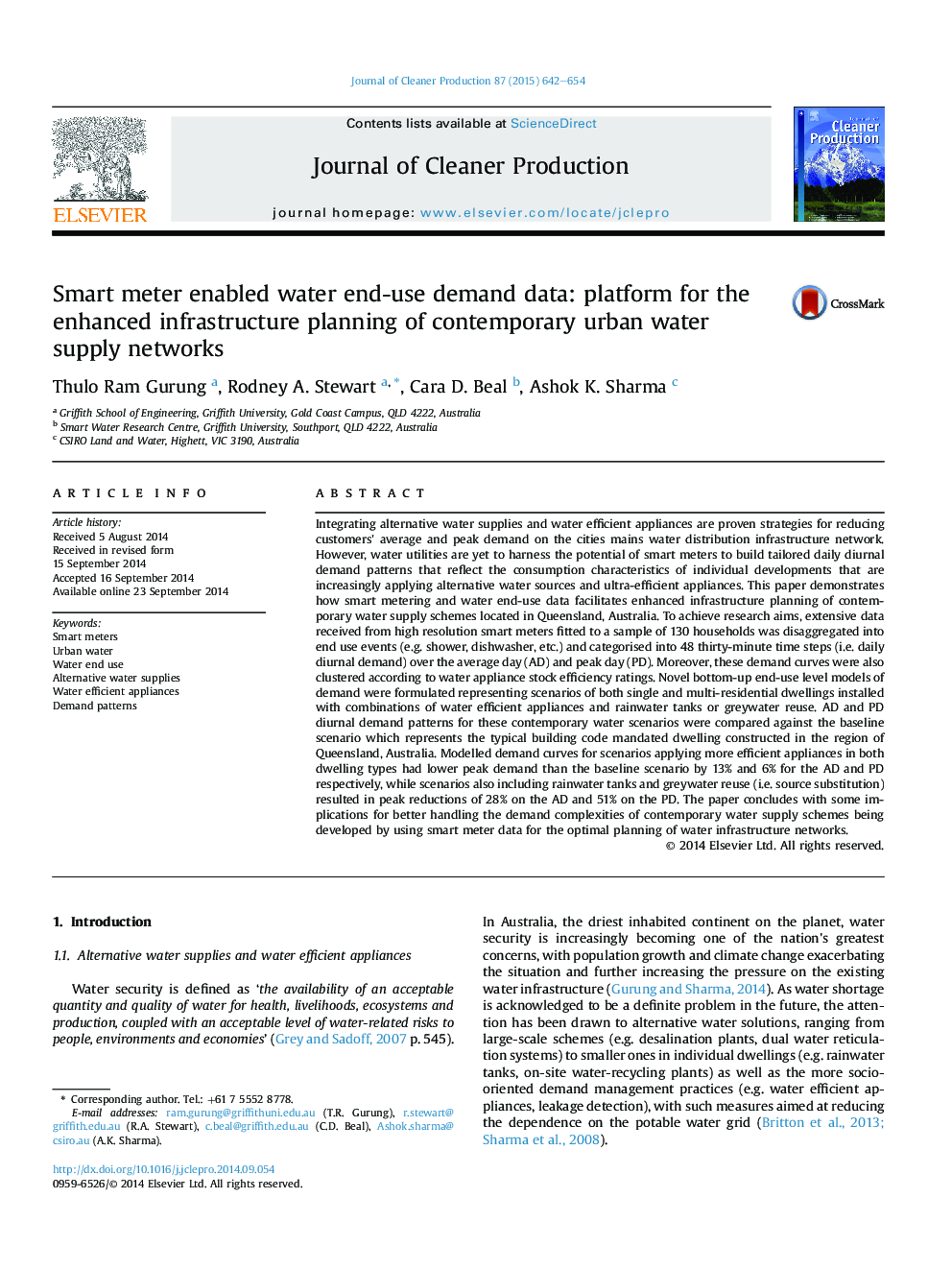| کد مقاله | کد نشریه | سال انتشار | مقاله انگلیسی | نسخه تمام متن |
|---|---|---|---|---|
| 8105342 | 1522159 | 2015 | 13 صفحه PDF | دانلود رایگان |
عنوان انگلیسی مقاله ISI
Smart meter enabled water end-use demand data: platform for the enhanced infrastructure planning of contemporary urban water supply networks
دانلود مقاله + سفارش ترجمه
دانلود مقاله ISI انگلیسی
رایگان برای ایرانیان
موضوعات مرتبط
مهندسی و علوم پایه
مهندسی انرژی
انرژی های تجدید پذیر، توسعه پایدار و محیط زیست
پیش نمایش صفحه اول مقاله

چکیده انگلیسی
Integrating alternative water supplies and water efficient appliances are proven strategies for reducing customers' average and peak demand on the cities mains water distribution infrastructure network. However, water utilities are yet to harness the potential of smart meters to build tailored daily diurnal demand patterns that reflect the consumption characteristics of individual developments that are increasingly applying alternative water sources and ultra-efficient appliances. This paper demonstrates how smart metering and water end-use data facilitates enhanced infrastructure planning of contemporary water supply schemes located in Queensland, Australia. To achieve research aims, extensive data received from high resolution smart meters fitted to a sample of 130 households was disaggregated into end use events (e.g. shower, dishwasher, etc.) and categorised into 48 thirty-minute time steps (i.e. daily diurnal demand) over the average day (AD) and peak day (PD). Moreover, these demand curves were also clustered according to water appliance stock efficiency ratings. Novel bottom-up end-use level models of demand were formulated representing scenarios of both single and multi-residential dwellings installed with combinations of water efficient appliances and rainwater tanks or greywater reuse. AD and PD diurnal demand patterns for these contemporary water scenarios were compared against the baseline scenario which represents the typical building code mandated dwelling constructed in the region of Queensland, Australia. Modelled demand curves for scenarios applying more efficient appliances in both dwelling types had lower peak demand than the baseline scenario by 13% and 6% for the AD and PD respectively, while scenarios also including rainwater tanks and greywater reuse (i.e. source substitution) resulted in peak reductions of 28% on the AD and 51% on the PD. The paper concludes with some implications for better handling the demand complexities of contemporary water supply schemes being developed by using smart meter data for the optimal planning of water infrastructure networks.
ناشر
Database: Elsevier - ScienceDirect (ساینس دایرکت)
Journal: Journal of Cleaner Production - Volume 87, 15 January 2015, Pages 642-654
Journal: Journal of Cleaner Production - Volume 87, 15 January 2015, Pages 642-654
نویسندگان
Thulo Ram Gurung, Rodney A. Stewart, Cara D. Beal, Ashok K. Sharma,